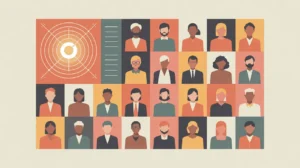Importance of Narrative Change
Narrative change shifts the stories, frames, and assumptions that shape how societies understand issues and respond to them. It is essential because dominant narratives often reinforce inequities, while alternative narratives can open space for empathy, solidarity, and systemic reform. In development and social innovation, narrative change matters because it influences public opinion, policymaking, and resource flows, often determining whether innovations and movements gain traction or resistance.
Definition and Features
Narrative change refers to the intentional effort to reshape collective stories and cultural frames in order to influence perceptions, behaviors, and systems. Its defining features include:
- Framing Power – defines how issues are understood and prioritized.
- Cultural Resonance – connects to values, identities, and lived experiences.
- Visibility – amplifies marginalized voices and perspectives.
- Strategic Communication – uses media, art, and storytelling to shift discourse.
- Systemic Reach – affects not only individual attitudes but also policies and institutions.
How this Works in Practice
In practice, narrative change can be seen in movements reframing disability from a medical issue to a rights issue, or campaigns that shifted marriage equality into the language of love and fairness. Development actors use narrative change strategies to challenge stereotypes about poverty or to promote inclusive views of migration. Tactics may include digital storytelling, cultural production, partnerships with journalists, or grassroots campaigns. Challenges include counter-narratives from powerful interests, co-optation, and the long timelines required for cultural shifts.
Implications for Social Innovation
Narrative change expands social innovation beyond programs and policies to the realm of meaning-making and cultural transformation. It enables proximate voices to contest dominant frames, making space for equity and new possibilities. For funders and practitioners, investing in narrative change means valuing communications, arts, and culture as core strategies for systemic impact. By shifting the stories societies tell, narrative change lays the foundation for broader acceptance, legitimacy, and sustainability of social innovation.







